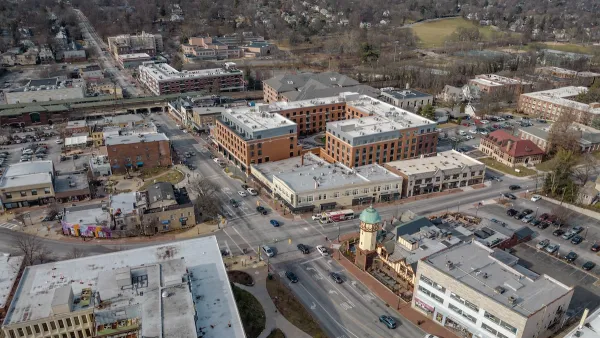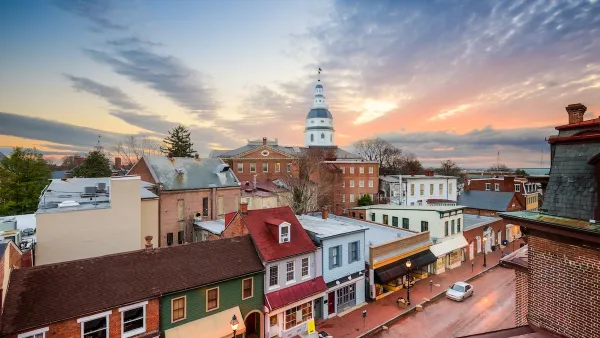If you’ve ever worked in distressed communities, you’ve faced the dilemma that there simply is no private market for what you want to see built. You can chip away at the problem of vacant land with thoughtful affordable housing developments or, if you’re lucky, a new recreation center but by and large, large amounts of vacancy remain and impact the psyche of those that live nearby. So working closely with residents, and really listening, has sparked a whole new sub-discipline in our world of urban planning and design - temporary use. The shrinking cities movement shined a light on the potential of ad-hoc reuse and programming some time ago but so too has groups like the Pennsylvania Horticultural Society
If you've ever worked in distressed communities, you've
faced the dilemma that there simply is no private market for what you want to
see built. You can chip away at the
problem of vacant land with thoughtful affordable housing developments or, if
you're lucky, a new recreation center but by and large, large amounts of
vacancy remain and impact the psyche of those that live nearby. So working closely with residents, and really
listening, has sparked a whole new sub-discipline in our world of urban
planning and design - temporary use.
The shrinking cities movement shined a light on the
potential of ad-hoc reuse and programming some time ago but so too has groups
like the Pennsylvania Horticultural Society's Philadelphia Green program which
has taken the idea of temporary greening to the scale of thousands of city
lots. Public art, events and tours are
all, I hope, becoming a regular part of our planning world.
So armed with the Cleveland Urban Design Center's recently released
(and fantastic) Pop-Up City book on temporary and interim uses, Infill
Philadelphia challenged teams of designers to take the idea of temporary use to
some of Philadelphia's vacant industrial sites.
After four hours of brainstorming, the design teams presented
a range of ideas to a diverse panel of artists, designers, neighborhood leaders
and city representatives. While there
were some great ideas, it was interesting to see that many trained designers
still struggle with the idea of temporary.
There was clearly some concern that "temporary" would equate to "wasteful"
thus resulting in many ideas for something built or fixed.
This is an opportunity to productively bring people
together which is never wasteful. Many communities have built capacity and strong local leadership
by just going out there and doing things.
For me, the more poetic and interesting results of the
charrette emerged when teams put aside the idea that something had to be built
but instead started with a program. Urban camping? I'm all for it.
So as the keynote speaker and panelist David Belt said, "just
do it." Take a guerilla approach to
interim uses and see what can be done with limited dollars. Better yet try to stretch that little bit of
money to create a use and maybe something built that is an attention
grabber. So many of the areas where temporary
use can be immensely helpful are off the map and overlooked. Interim uses are an opportunity to discover
something about our cities, in the case of this charrette, Philadelphia's
industrial heritage.
It's why charrettes like this are so important. The ideas sparked debate and encouraged
planners, designers and residents to start seriously talking about both the long-term issue of
industrial use but also the short-term reuse of vacancy.

Analysis: Cybertruck Fatality Rate Far Exceeds That of Ford Pinto
The Tesla Cybertruck was recalled seven times last year.

National Parks Layoffs Will Cause Communities to Lose Billions
Thousands of essential park workers were laid off this week, just before the busy spring break season.

Retro-silient?: America’s First “Eco-burb,” The Woodlands Turns 50
A master-planned community north of Houston offers lessons on green infrastructure and resilient design, but falls short of its founder’s lofty affordability and walkability goals.

Test News Post 1
This is a summary

Analysis: Cybertruck Fatality Rate Far Exceeds That of Ford Pinto
The Tesla Cybertruck was recalled seven times last year.

Test News Headline 46
Test for the image on the front page.
Urban Design for Planners 1: Software Tools
This six-course series explores essential urban design concepts using open source software and equips planners with the tools they need to participate fully in the urban design process.
Planning for Universal Design
Learn the tools for implementing Universal Design in planning regulations.
EMC Planning Group, Inc.
Planetizen
Planetizen
Mpact (formerly Rail~Volution)
Great Falls Development Authority, Inc.
HUDs Office of Policy Development and Research
NYU Wagner Graduate School of Public Service





























